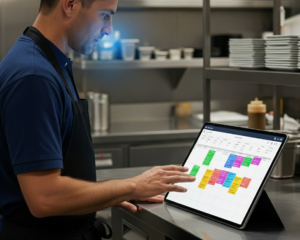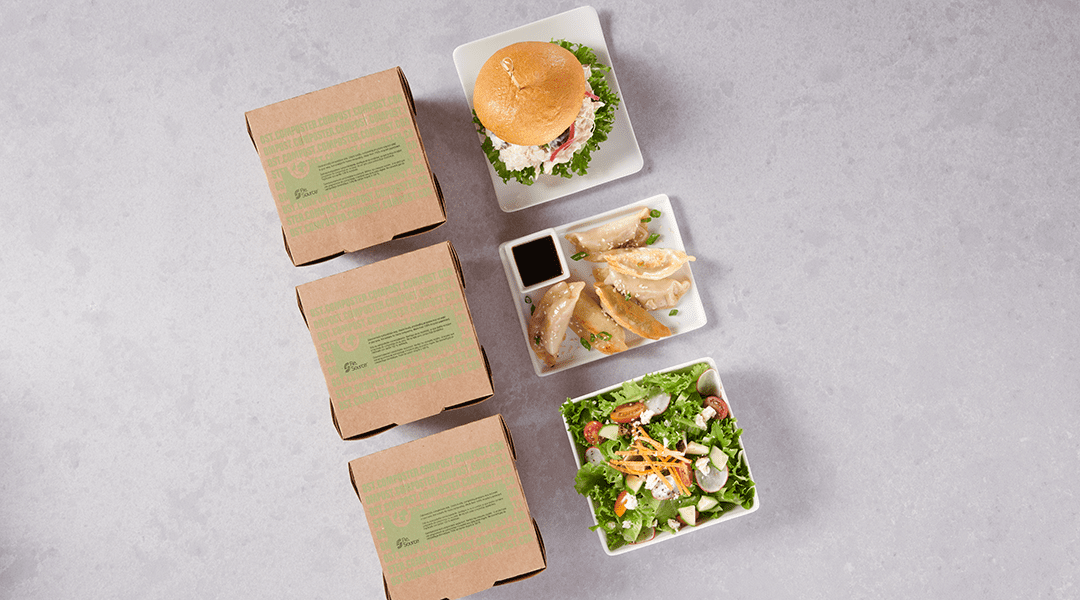The restaurant industry has historically been a technology laggard, trailing others in employing technological business solutions. But in recent years, a significant increase in technology use is pushing more and more foodservice operators to become early adopters. Several factors are driving this, including:
- Generational evolution: new generations, who adopt technology more readily, are becoming owner/operators.
- Cost management: as operating costs increase, savvy operators are employing technology to offset them and remain profitable.
- Guest expectations: as younger age groups fill tables, they expect technology to be part of their dining experience.
- Employee needs: younger generations also are filling open positions and are looking to use technology to make their jobs easier and more efficient.
Defining technology solutions
Any technology that helps with business execution and guest and employee interaction is a technology solution. They could include, but are not limited to:
- Point-of-sale (POS) systems.
- Scheduling software.
- Cost of goods sold (COGS) analysis tools.
- Social media management programs.
- Loyalty programs.
When a technology evolution like this hits the market, some operators want to “catch up” and implement solutions right away. Instead, take the time to evaluate potential solutions and determine if the benefits warrant the investment.
4 Steps to determine if technology is right for you
Deciding whether to employ a technology solution should be based on how the solution will impact guests. Keep in mind every solution will affect the guest experience to some degree. The aim is to enhance the guest experience, as a great guest experience is a key differentiator in this competitive market.
To decide if a piece of technology is right for your operation, follow these four steps.
1. Define the business need and goal
Write out a sentence or two on what the issue is and your goal, and how a new technology solution may help you achieve the goal.
Example: We want to capture all of our sales data and improve speed of service through a new POS system that allows us to take orders tableside.
2. Determine if the goal could be achieved without technology
Posing such a simple challenge ensures an existing solution or adjustment to practices couldn’t achieve the same goal, avoiding the additional cost and change management that comes with new technology.
Example: Could I simply update my system with correct pricing and PLUs or physically move the system to make it easier for my team to use?
3. Conduct a simple return on investment (ROI) analysis
See how costs add up and what you’ll get for the money by looking at the benefits of making such an investment.
Cost
- How much will the system cost?
- What are the hard costs? (equipment, software, etc.)
- What are the soft costs? (training, guest communication, internal change management, short-term executional changes, etc.)
- What other aspects of your business will it impact and for how long?(Example: I think it will take 6 weeks to get a new reservation system up and running and my team and guests comfortable with using it. So I need to get that done no later than 11/15 to make holiday execution easier.)
Return
- How much in incremental sales or profits do you need to cover the hard costs?
- How long should it take to achieve those sales/profits?
- How do you measure guest experience and what’s your benchmark for it?
- What’s your goal for an improved guest experience? When do you hope to achieve that goal? (Note: you will need to use the same method of measurement to make sure your benchmark and progress are an apples-to-apples comparison.)
It’s imperative to weigh the cost vs. the ROI and define measurable goals before investing in any technology solution.
4. Compare at least three vendors
These steps offer more of a scientific approach to evaluating technology solutions. But the reality is you will also get information (solicited or not) from vendors, friends, business associates and even articles. While all input is worth considering, validating what your analysis tells you vs. what you hear vs. what your business needs are can keep emotions and biases in check and allow the wisest decisions.
A comparative model will either validate your decision or expose the need to look at other technology solutions. Write down your minimum requirements (needs) and “nice to haves” (wants). Rank each vendor on each want and need using a score of 1-10 (10 being highly needed/wanted and 1 being a minor need/want) and compare scores. Your needs should rank highly with eligible vendors. Use wants as a tiebreaker, if necessary.
Tips to ease analysis
As you’re working through your evaluation, keep these tips in mind:
Remember you’re the expert. Recognize that you only need to understand your operational needs—not the technology. Defining goals and desired outcomes will help you evaluate if the technology solution is right for you. For example, if takeout is important to your operation, the vendor of any potential mobile ordering application can walk through how the system works. From there, you determine if that vendor’s solution aligns with how your operation handles takeout.
Know your non-negotiables. It’s important to understand there likely will be things in your business that cannot change. Make sure the providers you’re considering still work those non-negotiables.
Get only what you need. Be cautious of being sold “end states” that you don’t need today or haven’t defined as a future goal. Most operators buy technology with attributes they’ll likely never use. For example, a scheduling software may offer a solution for multiple locations. If you have no plans to open multiple locations, that software may not be the best fit.
Define ownership
As you introduce technology solutions, you will need someone on your team to manage them. Be mindful of the expertise and time this requires, both during the roll-out and ongoing. Work with your vendor to map out onboarding and training plans, to make sure that whoever manages it, and your team, stay updated on features and functionality.
As technology in this business shifts from a consideration to a necessity, keep in mind that there aren’t any “bad” solutions, but there certainly are better fits for your operation.
It’s your business, so you should own the decision making for the technology solutions that support it.




























